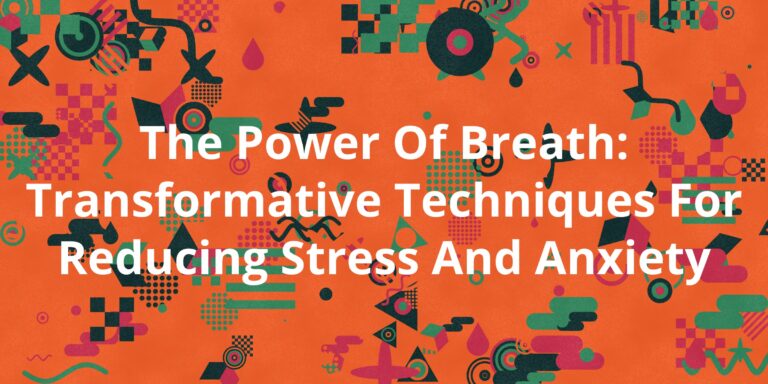Breathing is one of the most basic and natural things we do, but it’s also a powerful tool for improving our mood and overall well-being. In fact, many spiritual traditions emphasize the importance of breathwork in achieving inner peace, calmness, and clarity of mind.
One of the main reasons why breathing is so effective at elevating our mood is because it helps us to regulate our emotions. When we’re feeling stressed or anxious, our breathing tends to become shallow and rapid. This can lead to a buildup of tension in the body and an increase in negative thoughts and emotions.
On the other hand, when we practice deep, slow breathing, we can help to calm our nervous system and reduce stress levels. This, in turn, can improve our mood and make us feel more relaxed and centered.
In addition to helping us regulate our emotions, breathing is also a powerful tool for reducing physical tension and pain. When we hold our breath or breathe shallowly, we may experience tightness or discomfort in the chest, shoulders, or other parts of the body. By contrast, deep, slow breathing can help to release tension and promote relaxation throughout the entire body.
Another way that breathing can elevate our mood is by helping us to connect with the present moment. When we focus on our breath, we are reminded to stay in the present and let go of any worries or concerns about the past or future. This can help us to feel more grounded and centered, which can have a positive impact on our overall mood.
There are many different breathing techniques that you can try to elevate your mood and improve your well-being. Some popular options include:
1. Diaphragmatic breathing: This involves taking deep breaths using the diaphragm muscle, rather than shallow breaths that only involve the chest muscles. To practice diaphragmatic breathing, place one hand on your chest and the other on your stomach. As you inhale deeply, feel your stomach rise, and as you exhale, feel it fall.
2. Alternate nostril breathing: This involves taking slow, deep breaths through one nostril at a time, alternating between each nostril. To practice alternate nostril breathing, simply pinch one nostril shut with your finger and breathe deeply through the other nostril. Then switch sides and repeat.
3. Ujjayi breathing: This involves exhaling slowly through a narrowed throat, creating a soft hissing sound. To practice Ujjayi breathing, take slow, deep breaths through your nose, then exhale through your mouth with your lips closed and your teeth slightly parted.
4. Box breathing: This involves taking four slow, deep breaths in a square pattern, inhaling for four seconds, holding the breath for four seconds, exhaling for four seconds, and then holding the breath again for four seconds. To practice box breathing, simply count to four as you inhale, hold your breath, exhale, and then repeat.
Overall, incorporating breathwork into your daily routine can be a powerful way to elevate your mood and improve your overall well-being. Whether you choose to practice diaphragmatic breathing, alternate nostril breathing, Ujjayi breathing, or box breathing, taking time to focus on your breath can help you to feel more relaxed, centered, and connected to the present moment.



